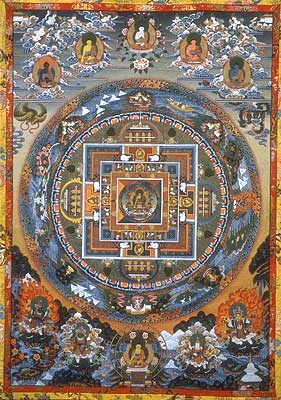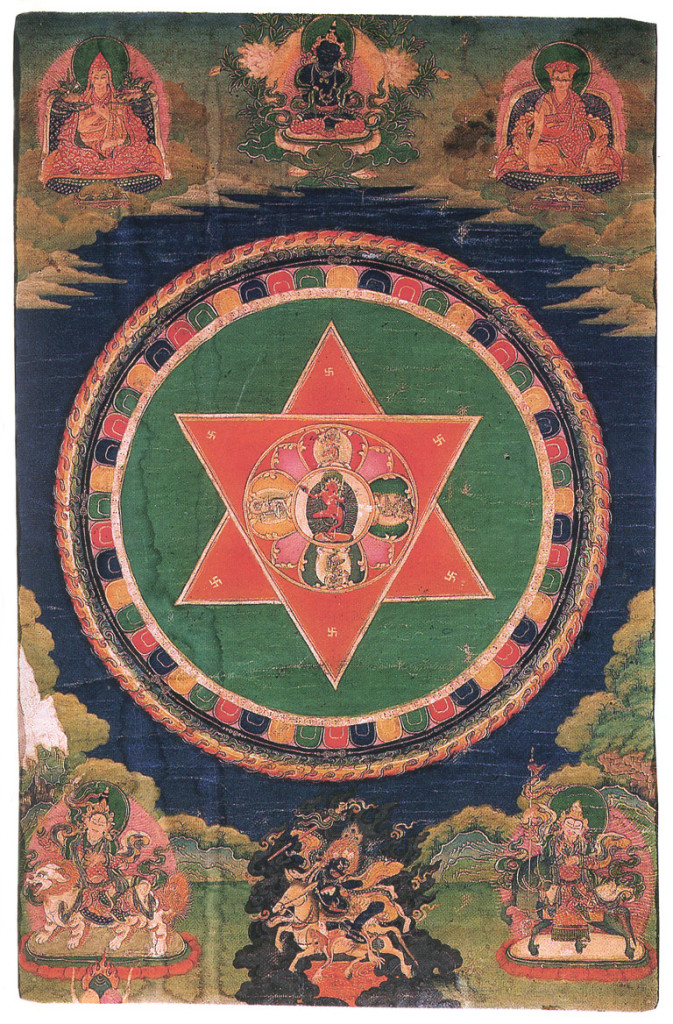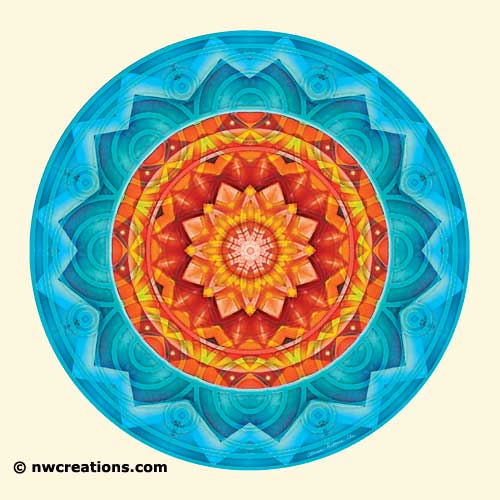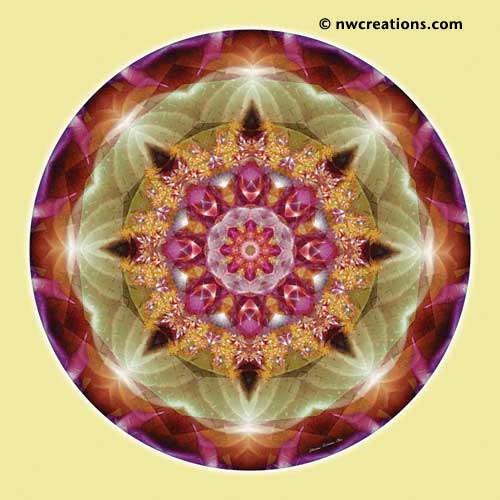Meditation has been used since ancient times to reduce stress, find one’s center, calm the mind and soothe the soul. Contrary to what you may think, not all meditation is spiritual, just as many individuals use it for personal use. Regardless of your reasoning or goals you hope to achieve, your personal journey can be significantly enhanced by using a mandala.
Sanskrit, for the English word circle, the mandala has been introduced to the population through Buddhist and Hindu religions. When you choose a mandala for meditation purposes, it is important to be aware that each one is very different. They offer their individual symbolism and quite often, a deity is housed in the center.
When you gaze at a mandala during meditation and follow one point to another your mind and body naturally become intertwined. When you are able to become one with the mandala, you have entered into a quasi state as you are captivated by the mandala’s design.

Choosing the right mandala is imperative for your journey. Although Tibetan Monks sweep their sand mandalas up and take them to a nearby body of water so they can finalize their circle of life, your actions don’t need to be as extreme to be effective. In fact, there are coloring pages which are available online that can be downloaded or you can simply draw your own if you’re feeling creative.
(See the post, 10 Links to Free Mandala Coloring Pages for sources of coloring images)
If you want a more traditional mandala, you will find them primarily made from silk, thangka or sand but contemporary versions are available in the form of photographs, paintings, fiber arts and even sculptures.

When you prepare to meditate, it is important that you are able to find yourself in a comfortable position, somewhere quiet where you won’t be interrupted with your mandala placed across from you at eye level. Some find it helpful to create an altar for their mandala, adding objects that are symbolic of peace, grace, purity and spirituality.
When you begin to meditate, you will start at the entry point which is always the mandala’s outer ring. According to Tibetan tradition, it is this part of the mandala that essentially purifies you so that you are able to continue on with your journey. As you concentrate on the various colors, shapes and lines, the path gradually leads you toward the center. Quite often, you will reach a dead end on your journey, this is to be expected. A mandala takes you on a path to enlightenment so there are times you need to reverse your path to get closer to the center.

Mandalas of Deep Trust, No. 8
© Atmara Rebecca Cloe
As you make your journey inhale and exhale slowly through the nose, concentrating on your body’s rhythm. You will find that as you become one with the wisdom of the universe, your body’s rhythm will begin to match the design of the mandala.

Mandalas from the Heart of Peace, No. 1
© Atmara Rebecca Cloe
It is recommended to partake on this journey to enlightenment for anywhere between 15 to 30 minutes. You will likely feel energized as well as quite surprised at just how powerful this sacred object actually is. As you release the stresses of the outside world, you will become quiet, calm, still and tranquil.
Article by Epouna
www.meaningofmandalas.com
Images from Wikimedia Commons and Atmara Rebecca Cloe
See all of Atmara’s Mandalas at Zazzle.com
——————————————————————————————————–
I look forward to your thoughts and comments!
Be sure to Subscribe to this blog either by RSS or Email via the forms on the top right column of the page.

Trackbacks/Pingbacks